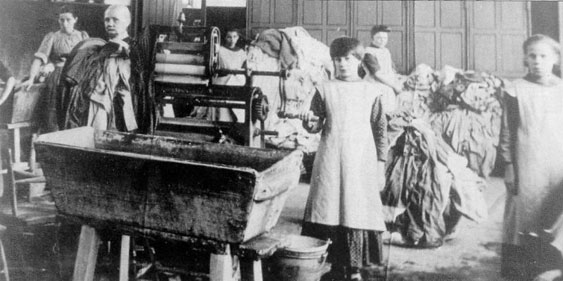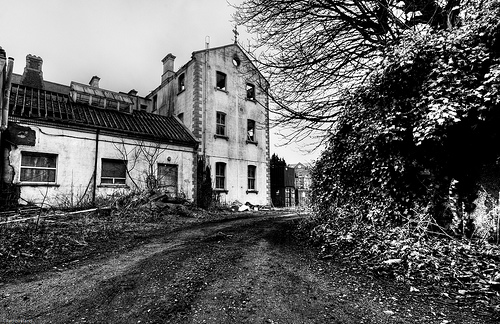Magdalene Asylums and Laundries
WordPress database error: [Incorrect DATE value: '']
SELECT * FROM wp_gigpress_artists AS a, wp_gigpress_venues as v, wp_gigpress_shows AS s LEFT JOIN wp_gigpress_tours AS t ON s.show_tour_id = t.tour_id WHERE show_related = 22 AND show_expire != '' AND show_status != 'deleted' AND s.show_artist_id = a.artist_id AND s.show_venue_id = v.venue_id ORDER BY show_date asc,show_expire asc,show_time asc
Because of the saint’s association with prostitutes, the name Magdalen or Magdalene evolved into a code word designating a “fallen woman.” So-called “Magdalene Asylums” were first founded in the late 18th century with the stated goal of redeeming and reforming prostitutes. Given alternative employment, imprisoned women were expected to repent for their sins via combined hard work and prayer. (These imprisoned women were also sometimes called “Daughters of Saint Margaret”—another saint associated with fallen women.)
Although now commonly considered a Roman Catholic phenomenon, the Magdalene Asylums initially grew out of the Protestant rescue movement. Magdalene Asylums existed in Great Britain, the United States, and Canada, but are now most closely and notoriously associated with Ireland where they are also known as Magdalene Laundries, because of the type of labor most commonly performed.
Magdalene Laundries were established in Ireland in the 19th century and administered by individual Roman Catholic orders. Initially, inhabitants were mainly prostitutes, but by the 1930s, the Magdalene Laundries were filled with unwed mothers or young girls accused of being “loose.” No crime had to be committed for incarceration. Instead, families and parents could commit young women as they deemed fit.
A prison-like atmosphere was maintained. An estimated thirty-thousand women labored in the Laundries during the twentieth century, essentially serving as slave laborers, working from dusk to dawn for the administering Order who retained profits. The system was only abolished in 1996, three years after the remains of 155 inmates buried in unmarked graves were discovered on the property of a Magdalene Laundry in Dublin and the subsequent scandal. Director Peter Mullan’s 2002 movie, The Magdalene Sisters, a fictional portrayal of several young women imprisoned in the Laundries, won the Golden Lion award, the highest prize given at the Venice Film Festival.
More information about Mary Magdalen and the various Saint Margarets may be found in The Encyclopedia of Mystics, Saints, and Sages.




